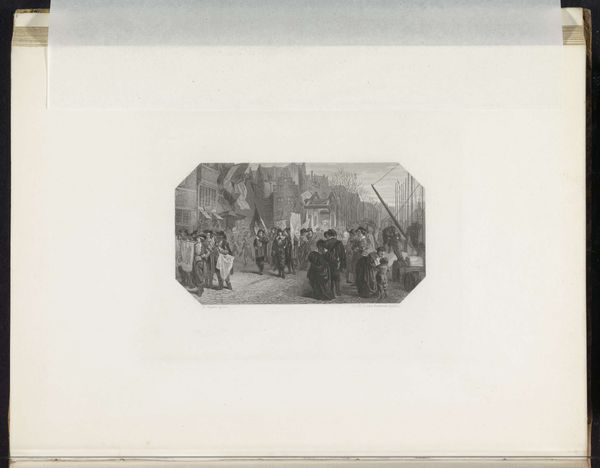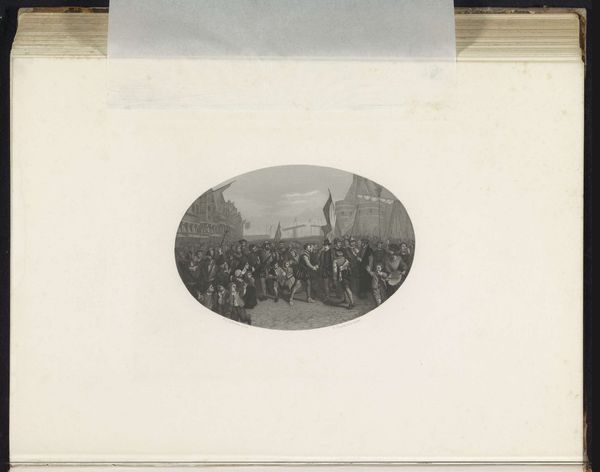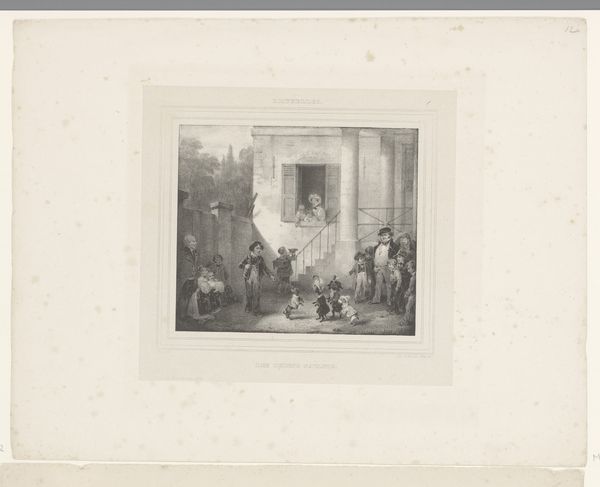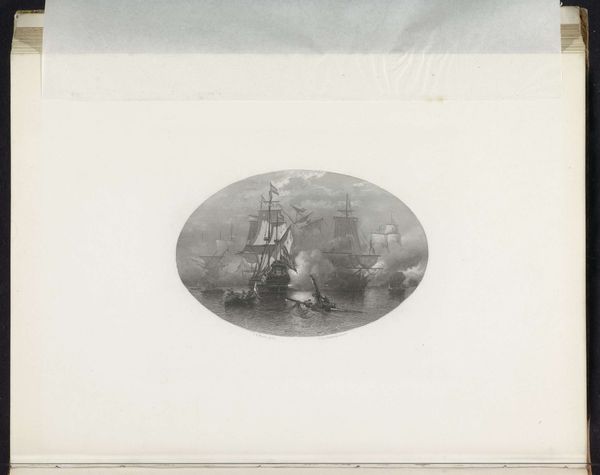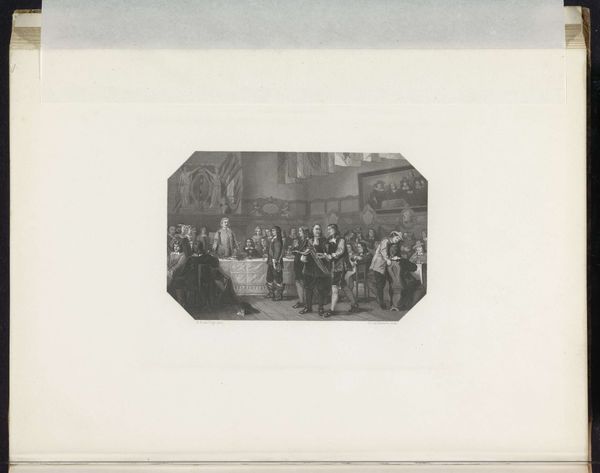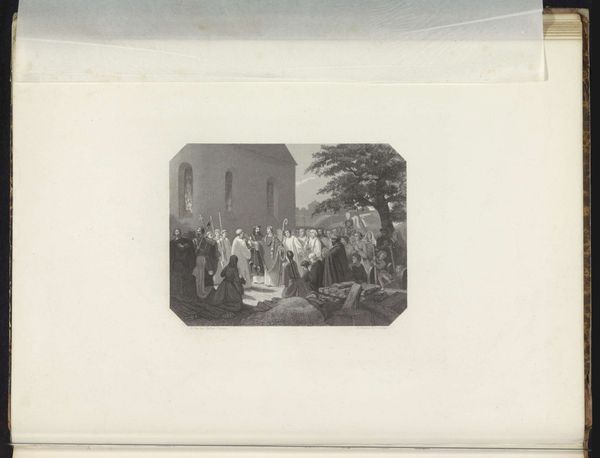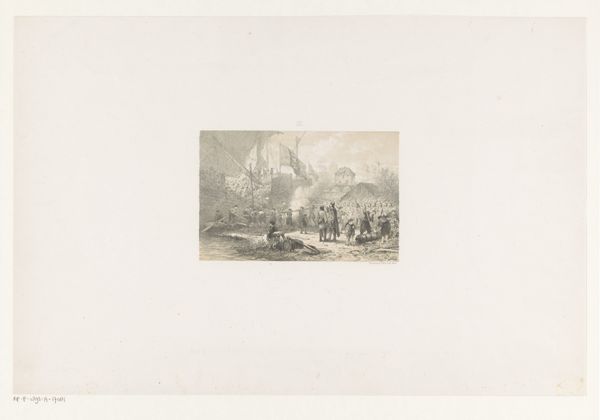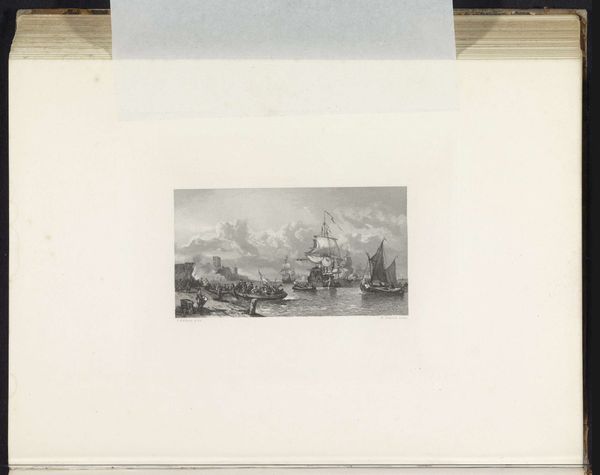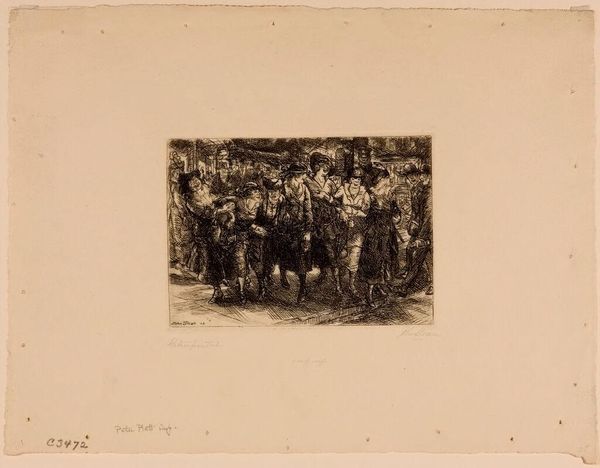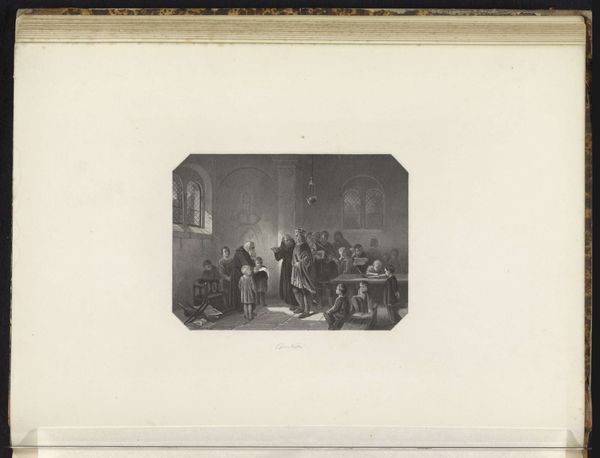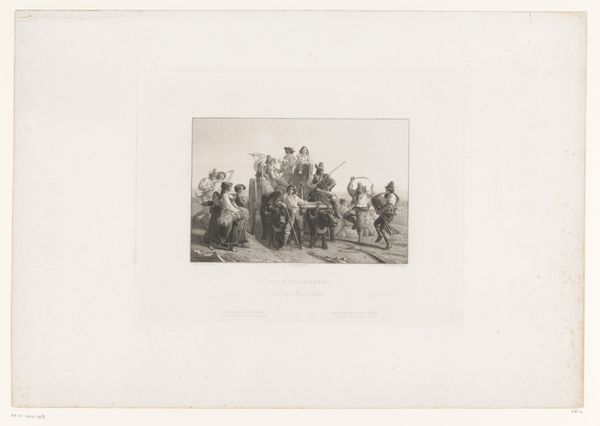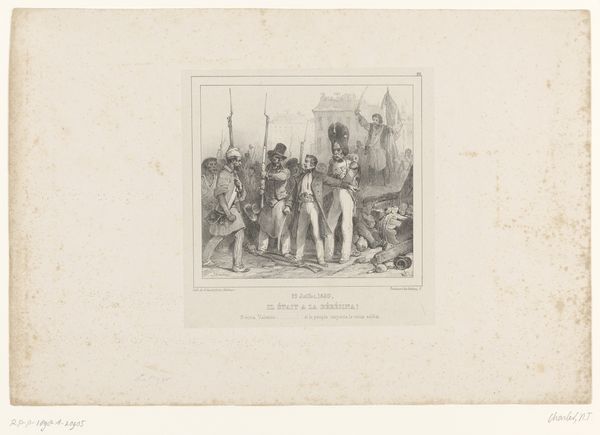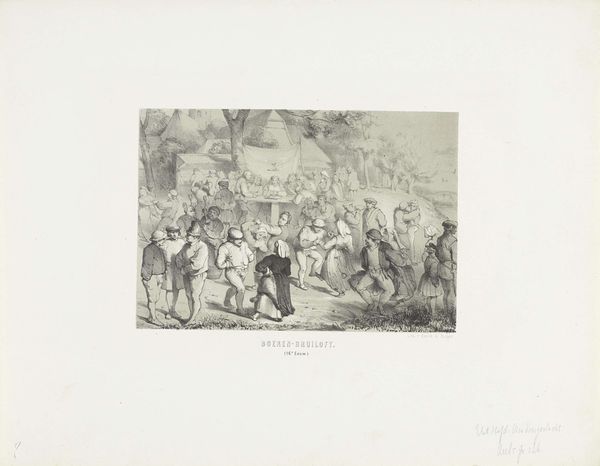
Menno van Coehoorn en Lodewijk XIV na het verlies van Namen, 1692 1865 - 1870
0:00
0:00
drawing, print, charcoal, engraving
#
drawing
# print
#
charcoal drawing
#
genre-painting
#
charcoal
#
history-painting
#
charcoal
#
engraving
#
watercolor
Dimensions: height 190 mm, width 240 mm
Copyright: Rijks Museum: Open Domain
Curator: This is "Menno van Coehoorn and Louis XIV after the Loss of Namur, 1692," an intriguing work by Willem Steelink, likely created between 1865 and 1870. The medium appears to be a combination of drawing and printmaking techniques—perhaps charcoal and engraving? Editor: My first impression is weariness. A scene after the battle… everyone looks so slumped, weighed down. And yet, this finely rendered image itself probably relied on extensive and slow material craftwork: the careful drawing of forms and then, presumably, carving an image in reverse into a block or plate. Curator: Yes, and think of the layers of craft—historical storytelling molded and refined through both image and replicable medium! It depicts that pivotal moment when Namur fell to Louis XIV, despite Coehoorn's defense efforts. It seems to capture that heavy weight of defeat in their postures. What fascinates me is how Steelink revisited that event so long afterward. Editor: The materials certainly enhance that somber feeling. The greyscale tonalities from charcoal and engraving create this atmosphere, so it seems perfect for portraying defeat. I'm intrigued, though, by the role of "the print," or reproduction. I imagine it allowed this visual idea, and presumably its implicit propaganda, to reach wider audiences, making this craftsmanship less an end and more of a conduit to wider political aims. Curator: Absolutely. This scene is rife with the tangible consequences of power, literally engraved for mass consumption. And I can’t help but think about those details, almost comical if they weren’t so sad, such as the flag bearers letting the banner fall or those huddled soldiers. Is that Coehoorn slumped so heavily on that seat? Even materials fail here; flags droop, bodies weary. Editor: Precisely! Consider the consumption inherent, even in defeat: from cannons to boots, textiles for those slouching figures, parchment for maps directing maneuvers, this print is itself embedded in cycles of militarism. How does that realization reshape one's reading of these two forlorn leaders in its foreground? Curator: The artwork becomes then less about the great men themselves, perhaps, and more about the immense material processes and expenditures upon which they relied… and their attendant human cost when those resources couldn't deliver the win. Fascinating! Editor: Indeed. I'm now drawn more than ever to examining what it communicates materially, or, as both method and object—perhaps against the explicit heroic narrative. Curator: Well, considering both our lines of thought together, this print offers up much about the relationships between materials and defeat! Thank you for helping bring into greater clarity my own thinking!
Comments
No comments
Be the first to comment and join the conversation on the ultimate creative platform.
